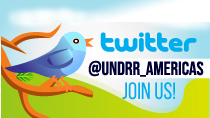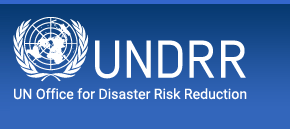- Our Mandate
- Mission and Objectives
- UNDRR in the UN
- Work Programme & Annual Reports
- Results Based System
- Work Partnerships
- Headquarters - Geneva
- SG-UN representatives for DRR
- Regional Office – The Americas and the Caribbean
- Head of the Regional Office – The Americas and the Caribbean
- What is Disaster Risk Reduction?
- What is the International Strategy?
- History of UNDRR
Caribbean throws spotlight on "forgotten" tsunami threat
 Photo credits: Google.com
Photo credits: Google.com
By: Sophie Hares, UNDRR – Americas and the Caribbean
From blowing conch shells to ringing church bells and sending mobile phone alerts, Caribbean countries are looking at high and low-tech ways to alert citizens to run for safety in the face of tsunamis which could wreak havoc on unprepared communities.
While devastating hurricanes grab the headlines each year, experts say tsunami risk is high in the region where countries need to put a greater emphasis on education and preparing coastal communities to be "Tsunami Ready" if they want to reduce losses.
"It is a real threat to the region. For a long time, it was called the forgotten danger," said Christa von Hillebrandt-Andrade, manager of the National Oceanic and Atmospheric Administration's (NOAA) Caribbean Tsunami Warning Program.
"If countries are not ready and people are not ready to respond, we could have hundreds of thousands of deaths."
Preparing to deal with deadly waves will be top of the agenda for World Tsunami Awareness Day on November 5, which will promote the "Sendai Seven Campaign" target of reducing disaster damage to critical infrastructure and disruption of basic services.
The last tsunami to hit the region was more than 70 years ago, when over 2,000 people died in the Dominican Republic and Haiti.
But experts say now the Caribbean, which has more than double the population and much of its infrastructure such as airports and tourist hotels in coastal areas, has more to lose.
While tsunamis might not top the long list of priorities for the cash-strapped Caribbean, considerable progress has been made with over 80 seismic and 100 sea-level monitoring stations from Bermuda to Brazil relaying data to the Pacific Tsunami Warning Center.
Around 60 communities in countries including Puerto Rico, Anguilla, Haiti and Guatemala are certified "Tsunami Ready", which means they have comprehensive hazard zone and evacuation maps, alert systems in place and undertake regular training and simulations.
It's also home to the Caribe Wave, the world's biggest annual tsunami drill which involves over 800,000 people from nearly 50 countries.
Haiti's second-city, Cap-Haitien, which is close to an undersea tectonic fault, is "Tsunami Ready" and more towns should be signed up this year in the country which is making tsunami preparation a priority, said the head of Haiti's civil protection.
"The tsunami risk is very high for the Caribbean and it's certainly even higher for a country like Haiti because of the social-economic situation. We're very vulnerable," said Jerry Chandler, Haiti's civil protection director.
Rolling out mobile phone alerts that can warn of approaching tsunamis as well as other hazards is now on the cards in Haiti, where mobile penetration is high, said Chandler.
Given a Caribbean tsunami could reach shore just five minutes after an earthquake hits, NOAA's Hillebrandt-Andrade says more accurately predicting the likelihood of a tsunami and its impact, and speeding up warnings to those at risk, is a priority.
Understanding risks makes it easier to analyze scenarios and map the potential impact, so scientists across the region are studying potential tsunami sources including underwater volcanos such as Grenada's Kick 'em Jenny, she said.
Finding ways to integrate satellite navigation systems with seismic monitoring is also being explored to enable analysts to rapidly assess earthquakes and their chances of tsunami generation, she said.
In the future, seismic and ocean pressure sensors could be attached to the web of undersea communications cables that criss-cross the seafloor, to efficiently gather information, she said.
Ronald Jackson, executive director of the Caribbean Disaster and Emergency Management Agency, said there was currently a lack of detailed information on how tsunamis would impact individual countries which could be used to determine safe zones and better protect infrastructure.
Filling this gap would be costly but would help countries design an "all-hazard" risk models to make them resilient, he said.
"The challenge is going to be what is your priority of priorities in an environment where there are limited resources," said Jackson.
The annual threat of hurricanes in the region means much of the Caribbean has well-established disaster early warning systems that can also be used to communicate tsunami warnings.
But with communities often having just minutes to evacuate in case of tsunamis, public education and training remains key, said experts.
"The real problem with tsunamis is that you can save people, if they can save themselves," said Chandler.
Related links
Follow the UNDRR news online :
 Now we have twitter account @UNDRR Américas y el Caribe
Now we have twitter account @UNDRR Américas y el Caribe
JOIN US!
Tweets por el @UNDRR Américas y el Caribe
